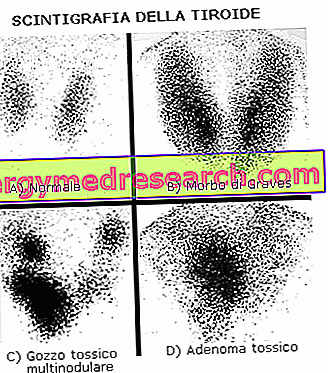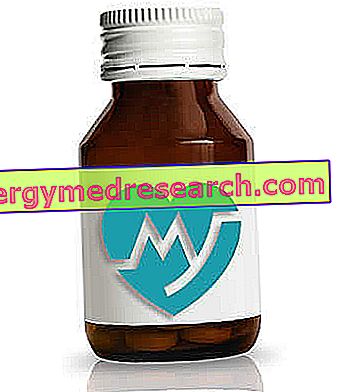Watch the video
X Watch the video on youtubeGenerality
Sodium bicarbonate is widely used to whiten teeth, removing stains and making them more white and shiny, both in the professional environment (in dental offices) and in the purely domestic environment.
Professional bleaching
The so-called air-polishing is the classic professional whitening technique: it uses the cleaning action of a spray of water, air and bicarbonate of soda to be projected with a certain pressure on the tooth that you want to treat.

Home bleaching
Under the Anglo-Saxon term, commercially more attractive, "baking soda", sodium bicarbonate is often present in so-called whitening toothpastes, useful for removing stains and imperfections from dental enamel. Moreover, given the widespread use as an antacid against heartburn, the easy availability on the market has made sodium bicarbonate a classic protagonist of the "do-it-yourself" tips - alas, dispensed with too much lightness - to give whiteness and shine to the smile .
Before analyzing the dangers and contraindications of these often unconscious practices, we see some examples of "do-it-yourself whitening recipes" in which baking soda plays a leading role:
- Squeeze a few drops from a lemon and drop them on a teaspoon of baking soda; collect some substance with the index finger and rub it lightly on the teeth, like a toothpaste.
- Put a spoonful of baking soda in a small glass and add a very small amount of water, stirring until it forms a smooth paste. Use this pasta like a normal toothpaste.
- Wet the toothbrush and immerse it in a small heap of baking soda, taking care to cover all the bristles. Brush your teeth for two minutes, taking care to reach each individual tooth. If you want to get an even more effective bleached action, wet the toothbrush with hydrogen peroxide (hydrogen peroxide) instead of the common tap water.
- Often, the most conscientious "experts" add the recommendation to rinse the mouth abundantly after use and to avoid prolonged use and too vigorous brushing of the teeth: limiting the use to a single weekly occasion, reduces the chances that the "do it yourself" whitening treatment erodes the enamel, putting the health of your teeth at risk.
Considering its traditional use as a bleaching and polishing agent, linked to the abrasive action of the crystals that compose it, sodium bicarbonate appears to be a safe ingredient, as long as it is used in the right doses and according to the correct methods of use. The problems arise precisely from these points, since home-made whitening "do-it-yourself" tends to not offer sufficient guarantees in terms of safety. Just think of the formulations that an inexperienced mind could give birth to, even in good faith, due to the summary knowledge on the subject, or to the excessive enthusiasm with which users could face the treatment, ending up using it too often.
Risks and Contraindications 

As mentioned, "do-it-yourself bleaching" is not a completely safe practice, especially if carried out by inexperienced people who do not know the potential risks that lie behind this domestic "treatment".
Let's see then what are the risks of baking soda used to whiten teeth:
- Unpleasant taste, especially when it is not compensated by flavor correctors.
- Risk of creating superficial burns of the oral mucosa in case of inadequate dilution.
- Excessive decrease in oral pH resulting from excessive and / or too frequent use of the product: although the acidity of the oral cavity is a known risk factor for the development of dental caries, even an excessive increase in oral pH can create damage, disturbing the normal bacterial flora of the mouth.
- Bleeding gums: the abrasive action of sodium bicarbonate can damage not only the enamel and underlying tissues, but also create micro-traumas at the gingival margin, causing bleeding.
- Deterioration of damage already present: one of the most important reasons why whitening treatments should only be carried out at the dental office or under the supervision of a dentist is the need to ascertain the health of the teeth in advance; for example, if a patient unaware of his or her condition uses sodium bicarbonate to whiten teeth that have exposed root canal cement and / or dentin, the abrasive effect of the substance will presumably lead to a significant worsening of the condition and an increase in dental sensitivity.
- Increase in dental sensitivity: consequent to the exposure of the dentin due to excessive abrasion of the enamel, but also to the abrasion of the cement often exposed in the area of the collar, ie between tooth and gum, due to the common phenomena of gum retraction.
- Risk of worsening the aesthetics of the smile: the excessive wear of the enamel made in an attempt to whiten the teeth with sodium bicarbonate ends up exposing the underlying dentin, generally with a yellowish color, subtracting luster from the smile.
Finally, given the possibility that the oral mucosa absorbs the sodium bicarbonate used to make the teeth whiter, this practice could be contraindicated for patients who, due to systemic health reasons, have acid-base balance disorders, such as hypertension, kidney failure, Addison's disease, Cushing's disease, metabolic alkalosis, hyposodic diet, intake of some medicines (such as diuretics and steroids).



